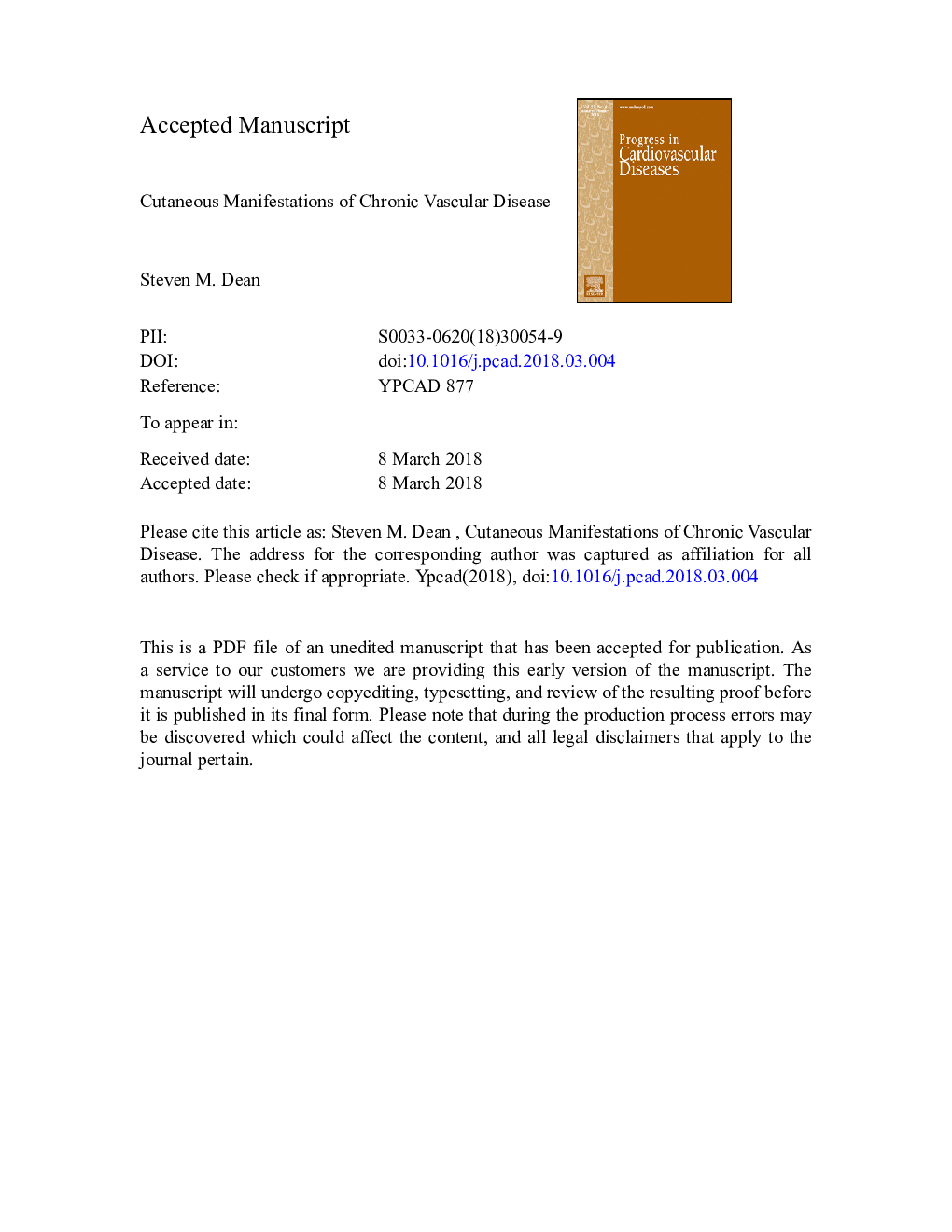| Article ID | Journal | Published Year | Pages | File Type |
|---|---|---|---|---|
| 8675227 | Progress in Cardiovascular Diseases | 2018 | 62 Pages |
Abstract
In the contemporary era of medical diagnosis via sophisticated radiographic imaging and/or comprehensive serological testing, a focused physical examination remains paramount in recognizing the cutaneous manifestations of chronic vascular disease. Recognition of the unique cutaneous signs of lymphatic and venous hypertension assists in the diagnosis as well as the staging and classification of both lymphedema and chronic venous insufficiency. Awareness of explicit dermatologic vasomotor manifestations aids not only in the identification of acrocyanosis, Raynaud phenomenon, pernio, and erythromelalgia but also mitigates confusion related to their clinical overlap. Although the clinical signs of peripheral artery disease are not necessarily specific or sensitive, a knowledge of suggestive dermatologic findings is helpful in recognition of severe limb ischemia. A brief review of the epidemiology, etiology, pathogenesis, and therapy of cutaneous related chronic vascular disease follows including an emphasis on characteristic clinical features supported by illustrative photographs.
Keywords
Related Topics
Health Sciences
Medicine and Dentistry
Cardiology and Cardiovascular Medicine
Authors
Steven M. Dean,
